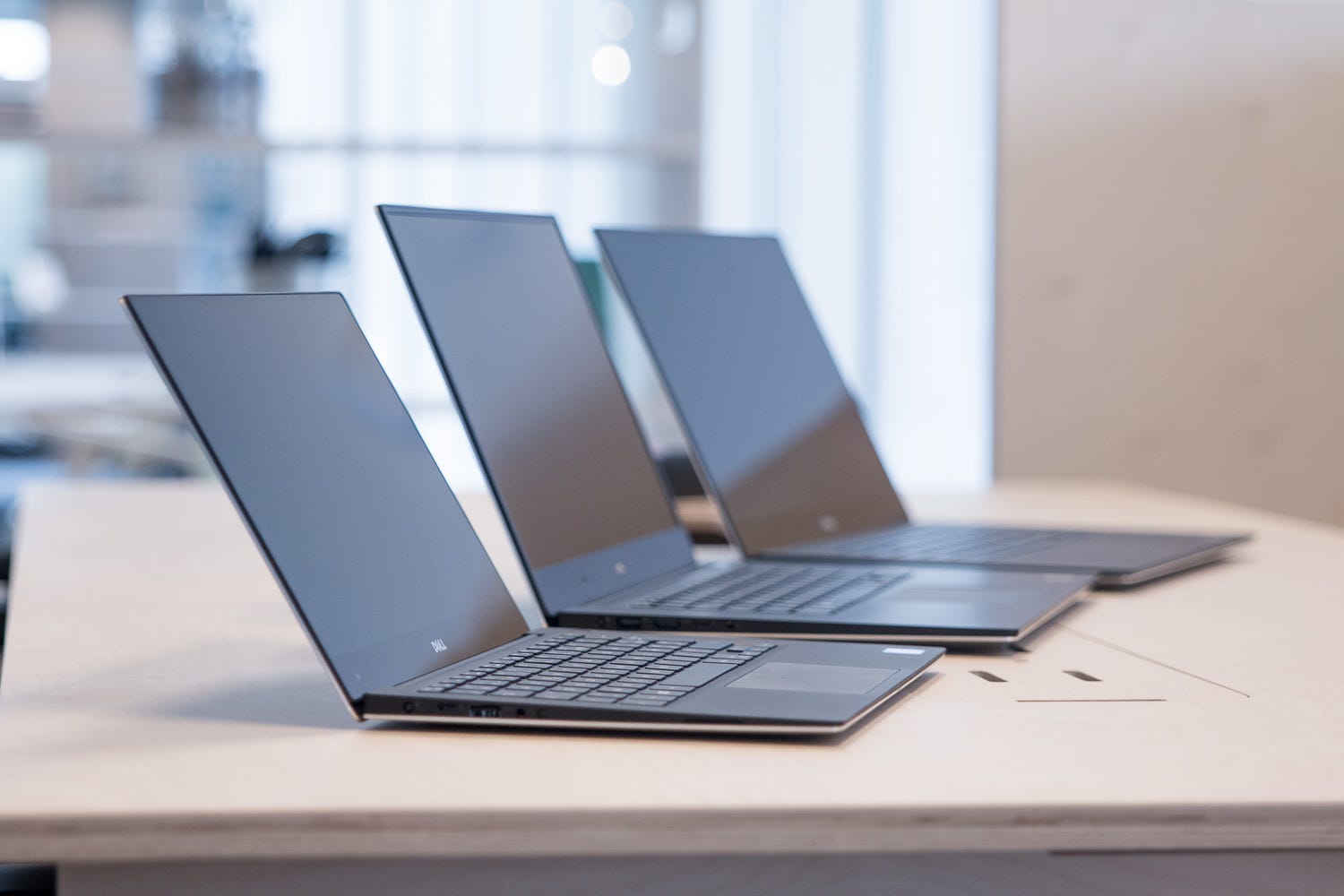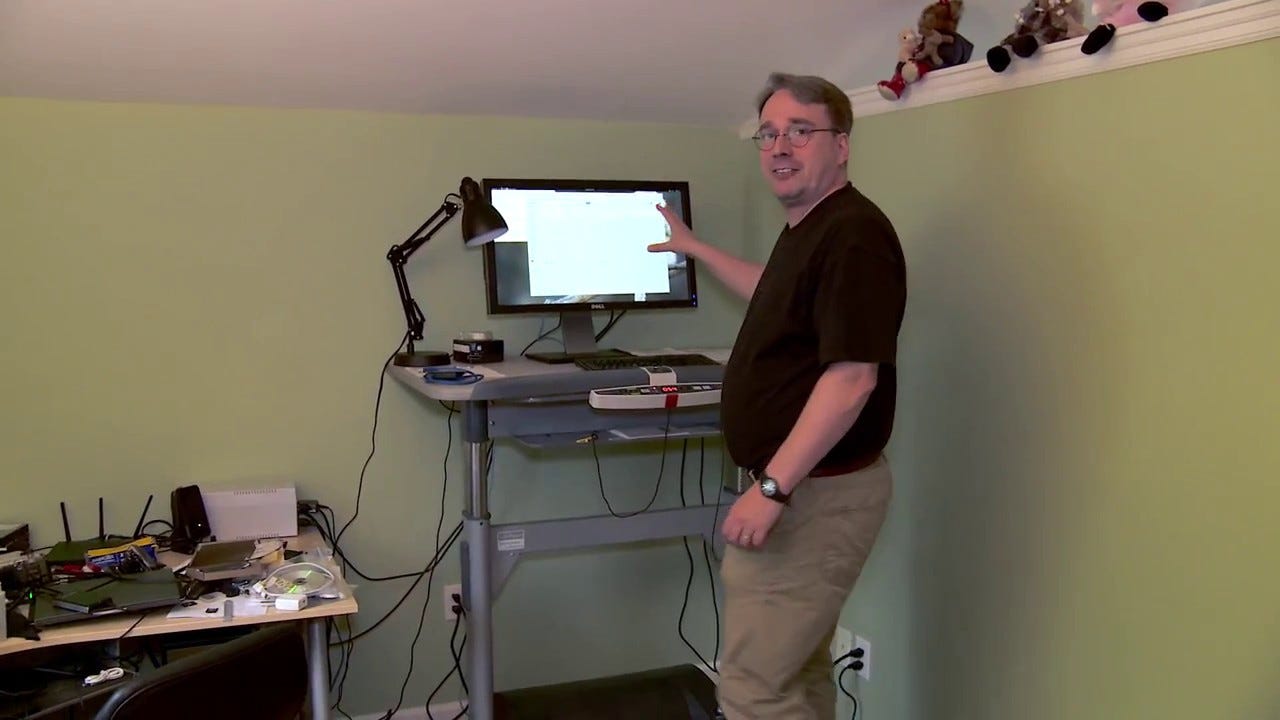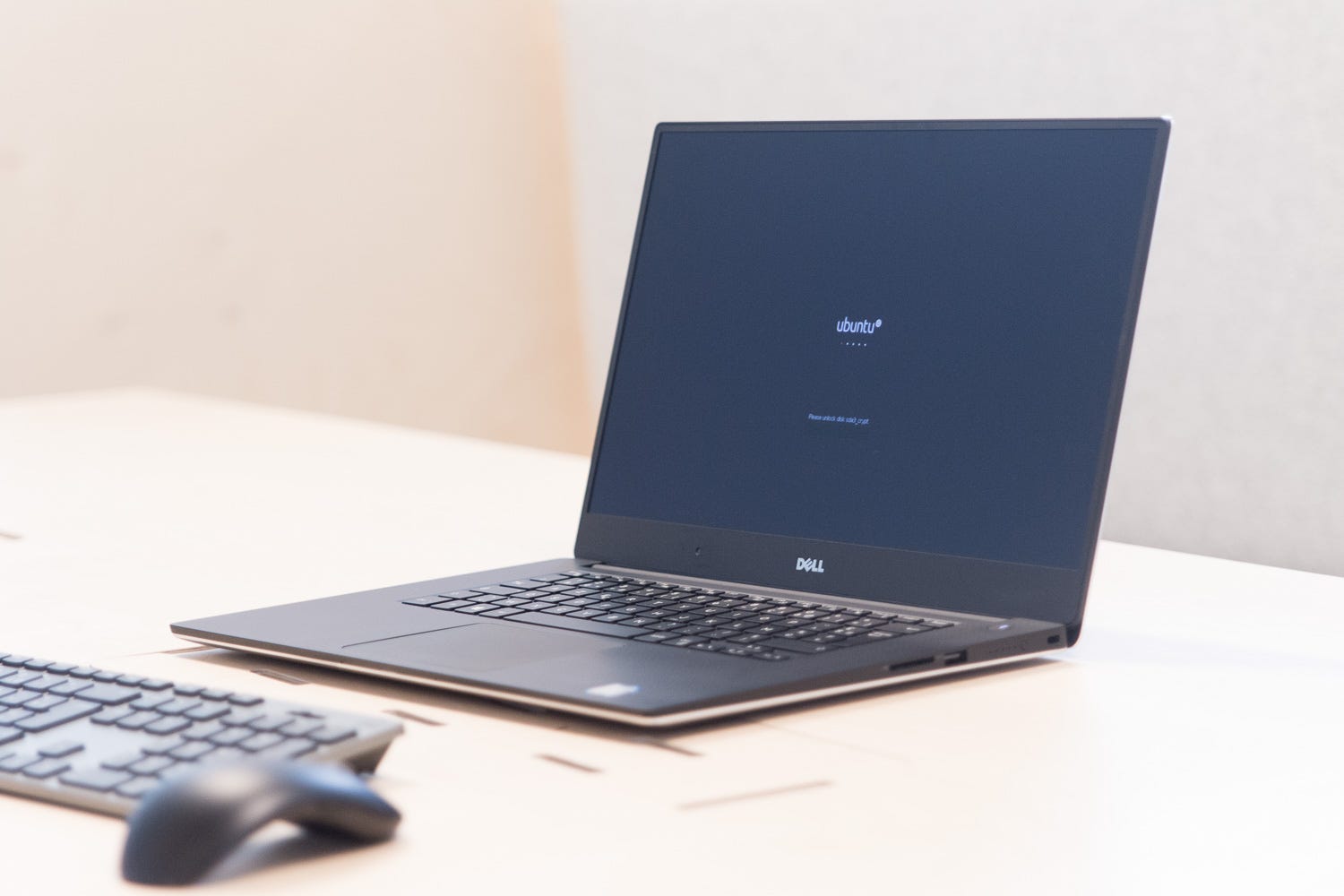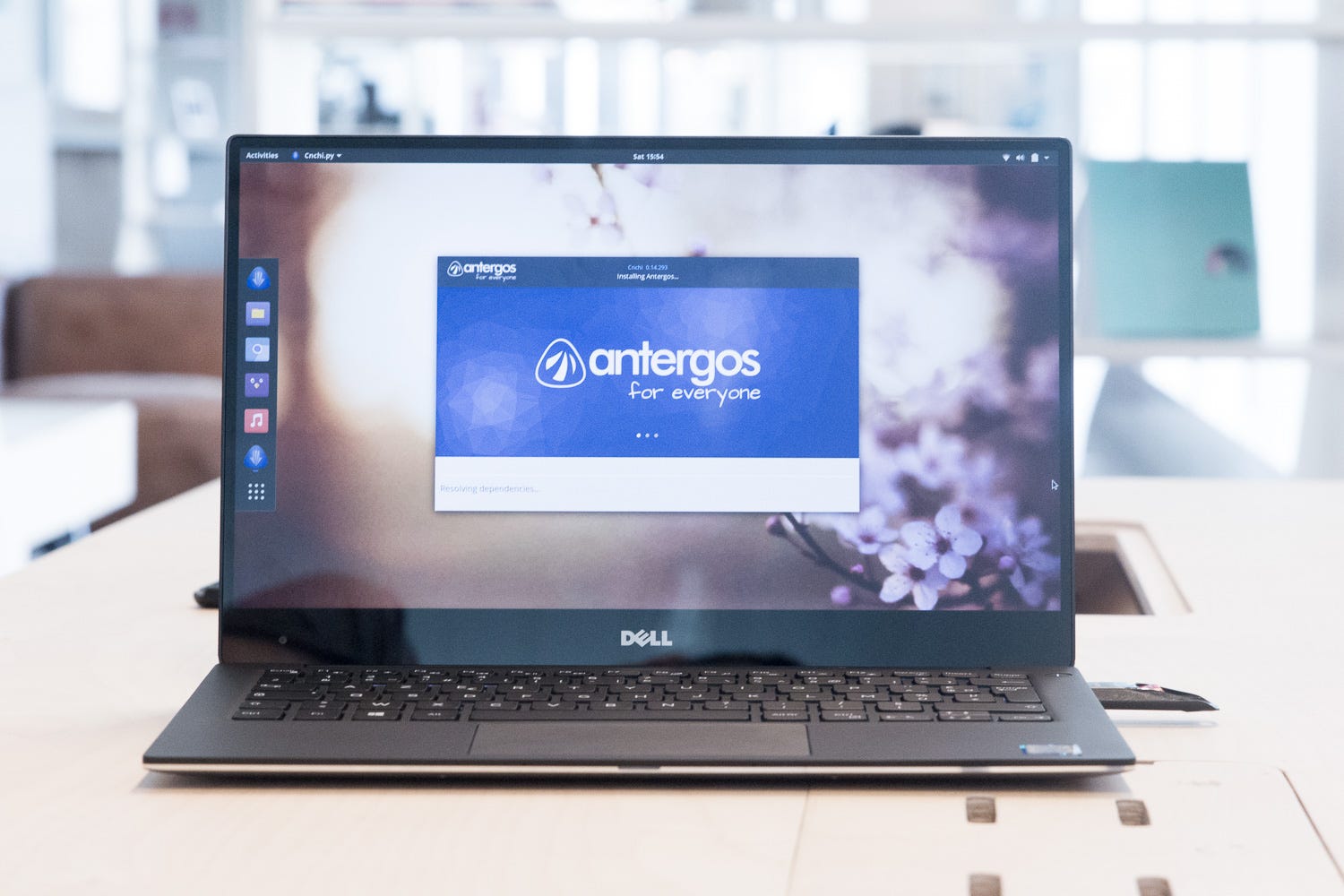- Как проще всего перейти с macOS на Linux
- А нужно ли это вам?
- Существуют ли Linux-версии вашего любимого софта?
- Не спешите делать из Linux «копию» macOS
- Выберите подходящий дистрибутив Linux
- Получше познакомьтесь с GNOME
- Чем GNOME похож на macOS
- Настройте GNOME под себя
- Разберитесь с горячими клавишами
- Запустите Linux в тестовом режиме
- На правах рекламы
- Switching from macOS to Linux
- After switching to Windows for a month, a new switcharoo, this time powered by Dell: Is Linux desktop ready for me to use professionally?
- Big thanks to Dell
- Linux in 1 minute. If you speed read.
- Linux is everywhere:
- Neeerds
- Linux and I
- Trying Linux
- Hello and Goodbye Ubuntu
- Hello, Antergos
- Email & Calendar
- Picture and RAW processing
- Dell Dock
- Steam
- Backups
- The Achilles heel of interfaces and graphics
Как проще всего перейти с macOS на Linux
Linux позволяет делать почти то же самое, что и macOS. И более того: это стало возможным благодаря развитому open source сообществу.
Одна из историй перехода с macOS на Linux в этом переводе.
Прошло почти два года с тех пор, как я перешел с macOS на Linux. До этого я 15 лет пользовался операционной системой от Apple. Я установил свой первый дистрибутив летом 2018 года. Тогда я ещё был новичком в Linux.
Сейчас я использую исключительно Linux. Там я могу делать всё, что захочу: регулярный интернет-серфинг и просмотр Netflix, написание и редактирование контента для моего блога и даже управление стартапом.
Немаловажно отметить, что я не разработчик, не инженер! Давно прошли те времена, когда считалось, что Linux не подходит для обычных пользователей, так как не обладает достаточно дружественным интерфейсом.
В последнее время было много дискуссий с критикой операционной системы macOS, поэтому всё больше людей рассматривают возможность перехода на Linux. Я поделюсь некоторыми советами по переходу с macOS на Linux, чтобы помочь другим сделать это быстро и без лишней головной боли.
А нужно ли это вам?
Прежде чем перейти с macOS на Linux, неплохо бы подумать, подходит ли вам Linux в принципе. Если вы хотите сохранить синхронизацию с Apple Watch, совершать звонки в FaceTime или работать в iMovie, не стоит бросать macOS. Это запатентованные продукты, которые живут в закрытой экосистеме Apple. Если вы любите эту экосистему, Linux, скорее всего, вам не подойдёт.
Я не был сильно привязан к экосистеме Apple. У меня не было iPhone, я не использовал iCloud, FaceTime или Siri. У меня был интерес к open source, оставалось только решиться и сделать первый шаг.
Существуют ли Linux-версии вашего любимого софта?
Я начал изучать софт с открытым исходным кодом ещё в то время, когда сидел на macOS, и обнаружил, что большинство приложений, которые я использую, будут работать на обеих платформах.
Вот браузер Firefox, например, работает и на macOS, и на Linux. Вы использовали VLC для воспроизведения мультимедиа? На Linux он тоже будет работать. Использовали Audacity для записи и редактирования аудио? После перехода на Linux вы можете взять его с собой. Вы вели прямые трансляции в OBS Studio? Есть версия для Linux. Пользуетесь мессенджером Telegram? Вы сможете установить Telegram для Linux.
Это касается не только программного обеспечения с открытым исходным кодом. Разработчики большинства (возможно, даже всех) ваших любимых проприетарных приложений, не принадлежащих Apple, сделали версии для Linux: Spotify, Slack, Zoom, Steam, Discord, Skype, Chrome и многие другие. Кроме того, почти всё, что вы можете запустить в своем браузере на macOS, может работать в вашем браузере на Linux.
Тем не менее, лучше всё-таки перепроверить, существуют ли Linux-версии ваших любимых приложений. Или может быть, есть адекватные или даже более интересные альтернативы для них. Проведите исследование: введите в поисковике «ваше любимое приложение + Linux» или «ваше любимое приложение + альтернативы Linux», или посмотрите на Flathub проприетарные приложения, которые вы можете установить на Linux с помощью Flatpak.
Не спешите делать из Linux «копию» macOS
Чтобы чувствовать себя комфортно при переходе на Linux, нужно проявить достаточную гибкость и быть готовым изучать нюансы использования новой операционной системы. Для этого вам нужно дать себе немного времени.
Если вы хотите, чтобы Linux выглядел и работал так же, как macOS, это практически невозможно. В принципе, можно создать рабочий стол Linux, похожий на macOS, однако, на мой взгляд, лучший способ перейти на Linux — начать с более стандартного GUI для Linux.
Дайте ей шанс и используйте Linux так, как она изначально было задумана. Не пытайтесь превратить Linux в то, чем она не является. И возможно, вам, как и мне, работать в Linux понравится гораздо больше, чем в macOS.
Вспомните, когда вы впервые сели за Mac: вам нужно было некоторое время, чтобы привыкнуть. Так что, в случае с Linux тоже не стоит надеяться на чудо.
Выберите подходящий дистрибутив Linux
В отличие от Windows и macOS, на базе Linux делают очень разные операционные системы. Я использовал и протестировал несколько Linux-дистрибутивов. Я также попробовал несколько рабочих столов (или GUI пользователя). Они сильно отличаются друг от друга с точки зрения эстетики, удобства использования, рабочего процесса и встроенных приложений.
Хотя ElementaryOS и Pop!_OS часто выступают в качестве альтернатив для macOS, я рекомендую начать с Fedora Workstation по следующим причинам:
- Её легко установить на USB-накопитель с помощью Fedora Media Writer.
- Она из коробки может распознать и адекватно работать со всем вашим железом.
- Она поддерживает новейшее программное обеспечение Linux.
- Она запускает среду рабочего стола GNOME без каких-либо дополнительных настроек.
- У неё большое сообщество и большая команда разработчиков.
На мой взгляд, GNOME — лучшая рабочая среда для Linux с точки зрения удобства использования, согласованности, гибкости и удобства работы для тех, кто пересел на Linux с macOS.
Fedora может стать для вас прекрасным стартом, и, когда вы освоитесь, то можете попробовать другие дистрибутивы, а также среды рабочего стола и оконные менеджеры.
Получше познакомьтесь с GNOME
GNOME в качестве рабочего стола по умолчанию установлен для Fedora и многих других дистрибутивов Linux. Его недавнее обновление до GNOME 3.36 привнесло современную эстетику, которую оценят пользователи Mac.
Будьте готовы к тому, что Linux, и даже Fedora Workstation в сочетании с GNOME, всё-таки будут существенно отличаться от macOS. GNOME очень чистый, минималистичный, современный. Здесь нет отвлекающих факторов. На рабочем столе нет иконок, и нет видимого дока. На ваших окнах даже нет кнопок сворачивания и максимизации. Но не паникуйте. Если вы дадите её шанс, она может стать для вас лучшей и наиболее производительной операционной системой, которую вы когда-либо использовали.
Когда вы запускаете GNOME, вы видите только верхнюю панель и фоновое изображение. Верхняя панель состоит из кнопки Activities слева, времени и даты в центре, а также трей-значков для сети, Bluetooth, VPN, звука, яркости, заряда батареи (и так далее) c правой стороны.
Чем GNOME похож на macOS
Вы заметите некоторые сходства с macOS, например, привязку окон и предварительный просмотр документов по нажатию пробела (работает точно так же, как Quick Look).
Если вы щелкните Activities на верхней панели или нажмёте клавишу Super (аналогично клавише Apple) на клавиатуре, перед вами появится нечто похожее на MacOS Mission Control и Spotlight Search в одном флаконе. Таким образом вы можете смотреть информацию обо всех открытых приложениях и окнах. С левой стороны вы увидите док, в котором представлены все ваши любимые (избранные) приложения.
В верхней части экрана есть окно поиска. Как только вы начнете печатать, основное внимание будет сосредоточено на нём. Так вы можете запускать поиск по установленным приложениям и содержимому файлов, находить приложения в Центре приложений, проверять время и погоду и так далее. Это работает так же, как Spotlight. Просто начните вводить то, что хотите найти, и нажмите Enter, чтобы открыть приложение или файл.
Вы также можете увидеть список всех установленных приложений (так же, как Launchpad на Mac). Нажмите на значок Show Applications в доке или сочетание клавиш Super + A.
Обычно Linux работает достаточно быстро даже на старом оборудовании и занимает очень мало места на диске по сравнению с macOS. И в отличие от macOS, вы можете удалять любые предустановленные приложения, которые вам не нужны.
Настройте GNOME под себя
Просмотрите настройки GNOME, чтобы внести изменения, которые могут сделать его более удобным для вас. Вот некоторые вещи, которые я делаю, как только устанавливаю GNOME:
- В Mouse & Touchpad я отключаю естественную прокрутку и активирую нажатие кнопки.
- В Displays я включаю ночной свет, который делает экран теплее по вечерам, чтобы предотвратить усталость глаз.
- Я также устанавливаю GNOME Tweaks, чтобы получить доступ к дополнительным настройкам.
- В твиках я включаю избыточное усиление для звука, чтобы увеличить громкость выше 100%.
- В твиках я также включаю тему Adwaita Dark, которую я предпочитаю светлой теме по умолчанию.
Разберитесь с горячими клавишами
GNOME ориентирован на клавиатуру, поэтому старайтесь больше использовать её. В разделе Keyboard Shortcut в настройках GNOME вы можете найти список различных сочетаний клавиш.
Вы также можете добавить собственные сочетания клавиш. Я настроил свои наиболее часто используемые приложения на открытие с помощью клавиши Super. Например, Super + B для моего браузера, Super + F для файлов, Super + T для терминала и так далее. Я также выбрал Ctrl + Q для закрытия текущего окна.
Я переключаюсь между открытыми приложениями, используя Super + Tab. А Super + H использую, чтобы скрыть окно. Я нажимаю F11, чтобы открыть приложение в полноэкранном режиме. Super + стрелка влево позволяет привязать текущее приложение к левой стороне экрана. Super + стрелка вправо позволяет привязать его к правой стороне экрана. И так далее.
Запустите Linux в тестовом режиме
Вы можете попробовать поработать в Fedora на своем Mac перед её полноценной установкой. Просто загрузите файл образа ISO с веб-сайта Fedora. Смонтируйте файл ISO-образа на USB-накопитель, используя Etcher, и загрузитесь с этого накопителя, нажав клавишу Option при запуске компьютера, чтобы вы могли попробовать ОС вживую.
Теперь вы можете спокойно изучить Fedora Workstation, не устанавливая на ваш Mac ничего лишнего. Проверьте, как эта ОС работает с вашим железом и сетью: можете ли вы подключиться к WiFi? Работает ли тачпад? Как насчёт аудио? И так далее.
Потратьте также некоторое время на изучение GNOME. Проверьте различные функции, которые я описал выше. Откройте некоторые из установленных приложений. Если всё выглядит хорошо, если вам нравится внешний вид Fedora Workstation и GNOME, то можно выполнить полноценную установку на ваш Mac.
Добро пожаловать в мир Linux!
На правах рекламы
VDSina предлагает серверы на любой операционной системе (кроме, macOS 😉 — выбирайте одну из предустановленных ОС, либо устанавливайте из своего образа.
Серверы с посуточной оплатой или уникальное на рынке предложение — вечные серверы!
Источник
Switching from macOS to Linux
After switching to Windows for a month, a new switcharoo, this time powered by Dell: Is Linux desktop ready for me to use professionally?
Nov 6, 2017 · 9 min read
To get right to it: in comparison, these are (most of) my main tools on my trusty MacBook (2014, specced out, with USB and a bloody SD card reader):
- Firefox as my main browser (yes, I love the Fox)
- macOS Mail and Calendar running multiple Google accounts
for hardcore emailing and calendar control
(I dislike the web interfaces for various reasons) - Design, layout and image manipulation:
Sketch, Photoshop, InDesign, Illustrator - Video editing on Prelude, Premiere, Final Cut Pro, and some bad-ass After Effects
- Picture & RAW processing in Lightroom
- Keynote for presentations
(repeat after me: PowerPoint is shit) - Coda for some light coding
- Evernote for… notes
- Wunderlist for todo’s
- Back-ups using various Time Machine drives,
set-it-and-forget-it with quick recovery or migration
(and a few cloud redundancies)
Big thanks to Dell
After my comparative test switching to Windows (thanks again, Microsoft!), the guys from Dell hooked me up with not one but three testing laptops, a huge 4K display, two docks and a keyboard/mouse combo. Sweeeet.
Also big thanks to UPS for messing up these shipments four times.
Good thing your core business isn’t parcel transport. No, wait
I have to say, their hardware is on point, I loved working on it.
Sleek, sturdy, looks and feels professional, hardware I trust, compared to a lot of plastic, clunky and ugly brands and models out there today.
Hell, they even have USB 3, USB-C, Mini Displayport ánd SD slots. All the connections. Yes, I’m talking to you, Apple. Dicks. (read my rant here)
Linux in 1 minute. If you speed read.
Linux is an operating system, like macOS or Windows, the main difference being that it’s open source and free, meaning you can download the source code and check or alter it however you wish.
It can do whatever you want, or look however you want. If you want to change something, and you have the (technical) skills, go make it, and preferably contribute it back to the community.
Linux is actually the kernel, the core, released 25 years ago as a hobby project by everybody’s favorite coder-on-a-treadmill Linus Torvalds.
This core gets combined with software, desktop environments and other tools to form distributions or distros for short. Some famous ones are Debian, SuSE, Red Hat, Arch, Mint, Gentoo, Antergos, and many more.
Other versions are completely stripped of everything deemed unnecessary, like visual interfaces or irrelevant software, to increase performance (to run on, for example, servers). All you get is a command line. Superhackerman.
Linux is everywhere:
- Powers most of the internet, servers and super-computers
- 85% of smart phones today — Android is Linux
- From satellites to IoT devices, mini computers like the Raspberry Pi
- Smart and/or connected devices, like fridges, TV’s, consoles, you name it
And increasingly on desktops for every day use, I’m quite happy to report.
Check out this Wired article from 08/25/2016, the eight of whatever the 25th month is (February but two years later?) in 2016:
Neeerds
Because of the performance-oriented approach, command line wizardry and maybe not the most modern of user interfaces, Linux has always been a bit in the domain of the nerd and tinkerer, all the way up to hardcore power users who write their own drivers because why the hell not.
I want to see if Desktop Linux is usable for a non-dev professional without having to go full-on super 1337 hacker at it every five minutes.
Linux and I
I’ve been dabbling with Linux since some wise people introduced me to Debian in I think around 1998. After installing a dual-boot setup on my main computer, I wanted to know more and took a Red Hat course.
Over the course of the years, I find myself still very much interested in the goings on, installing various distros on laptops and virtual machines to tinker with. And loving it. I was even in a Linux User Group, or Lug, on SuSE, holding meetings and install parties when I was 16 or 17. Yuuup.
So I know my way around Linux, the terminal, but don’t consider myself a connoisseur or power user. I have seen those.
Still with me? Good, let’s get down to it.
Trying Linux
It used to take a lot of sweat and tears to get a proper Linux desktop environment up and running (and that was actually part of the fun. Yes, fun.).
Right now, in a few seconds you can boot a live distro from a thumb drive, or a CD, try out the entire thing without even installing it on your computer. Pretty amazing, and also very useful for troubleshooting.
Like it and decide to install it? It took me about nine minutes. Nine. Minutes.
Fully functional operating system, browser(s), media player(s), office suite, the works. Ready to go. Swoosh. You can install it dual-boot with your other operating system, or just choose to dive in head-first and erase everything.
Which I did.
On separate hardware, though.
Hello and Goodbye Ubuntu
Ubuntu has rapidly become somewhat top-of-mind and a default choice for a noob-friendly Linux desktop. It installs quickly, has everything set up very friendly, you rarely even need the command line. Well done, there.
But I was quickly disappointed:
- The interface feels (very) dated (they announced switching to Gnome soon, but this is now) (update: since writing this part, they did)
- There is (still) a lot of inconsistency in interfaces, dialogs, and confusing things like multiple settings applications that look virtually identical but have different values
- It detected the Bluetooth keyboard and mouse, saw an active connection, but they didn’t work. At all. I expect default things to work instantly.
- Default installed calendar app didn’t support Google Calendar. Wot.
- Mounting Google Drive on Nautilus requires the Gnome Control Center, which looks exactly like “settings”, but has different… settings? Such confuse.
- Disabled natural scrolling, works… except in my browser and file manager. Tf.
It’s perfectly work-able, but for me it was too much of a messy eyesore,
and as I said, I’m sensitive to interfaces, so out it went. Very curious about the new version, though.
Hello, Antergos
After reading this article by Filip Bunkens switching to Linux as a Photographer, I installed Antergos a few months ago on an older Lenovo ThinkPad I have laying around for tinkering.
The default Gnome-based interface looks very slick, modern, is fast and responsive. Extra points for proper icons (still not a given in Linux land).
Configuring things work as you would expect them to work, actually lots of fun (well, if you’re into these things, which I am).
My Dell keyboard and mouse work as they should, even the transport controls (previous/next/play/pause/volume) on my Apple keyboard work! Something Windows couldn’t do, pretty annoying.
Hot corners for applications overview and window snapping — check.
Previews with space bar — check (thanks to Sushi with their 2006 website)
Search and launch with one key — check (built in)
Firefox with all my bookmarks, passwords, settings — check (Firefox Sync)
Spotify — check.
Dropbox and Google Drive — check.
Wunderlist — check.
VLC — check with some annoying detours. Damned.
Sketch… nothing yet. That’s a big bummer. I tried a few online tools like Vectr, and impressive as they are to run in a browser, they are too slow and lack functionality. I welcome suggestions!
Email & Calendar
Thunderbird supports Google Mail out of the box, and multiple accounts.
Something Outlook hasn’t yet succeeded in. Great start.
Thunderbird comes with the Lightning calendar, installing plugin Provider makes it work with multiple Google calendars. Easy peasy lemon squeezy.
The default Calendar app shows all my Google calendars immediately after adding my Google accounts (see screenshot up). This is how I want these things to work. 5 second configuration.
Picture and RAW processing
There are a few options, of which Darktable seems the most popular. Much as the website, the interface feels old and not very well thought-through, but it gets the job done. As much as I respect the developers working on this Open Source version, I prefer Lightroom hands down, for many reasons.
Dell Dock
This thing is pretty awesome. It connects, through one USB-C connector:
- Power
- My display through mini displayport, HDMI or even good ol’ VGA
- Audio monitors through the headphones out (unfortunately didn’t get the line out on the back to work)
- And through my Dell display USB hub, connected to one of the dock’s USB ports:
- Two mass storage devices
- Keyboard and mouse
In comparison, on my Mac I need to connect USB (display USB hub), displayport, power and line out, separately. Just one USB-C catching all this is superb.
Steam
Gaming on Linux? Yep! Ish. Thanks to Steam.
Not all the new and most modern, but I for example had Borderlands in my library, installed it, worked like a charm.
Also top-sellers like Rocket League, CS:GO, Kerbal Space Program or Civilization VI.
But don’t expect the latest and newest, or games like Call of Duty or Battlefield. Yet.
Backups
Time Machine is great. Incremental backups, file versions, the ease of use, and migrating to a new Mac is a breeze. There are a few Time Machine like apps for Linux (like Cronopete), I didn’t have the time to explore them, but I am confident they work as they should.
The Achilles heel of interfaces and graphics
Linux still has the problem that most of the graphics, websites or artwork are stuck in the early 2000s. People are used to much better and more modern, so this damages the brand and product experience, unfortunately.
Things are getting better at a fast rate, but they could do with some more user interface and design hires to get more people on board.
After running Antergos almost full-time for two weeks, I am very pleasantly surprised how easy and fast things have become, and how quickly I got used to it. I found myself complaining a few times at features macOS didn’t have.
Personally, not having Sketch, Lightroom, Photoshop or Premiere are possibly too much of a pain. I know, Gimp, but after Photoshopping for 15 years, the cost of switching gets very steep.
But other than that, yes. Linux is more than capable of replacing macOS or Windows as operating system for professionals, complete with free to use software and backups. It still requires some technical skills, and I’m sure this will get even more user-friendly over time.
Dell has kick-ass hardware. I can see why they were so confident to send me a shitload of their stuff. Thanks again, chaps.
Источник
















